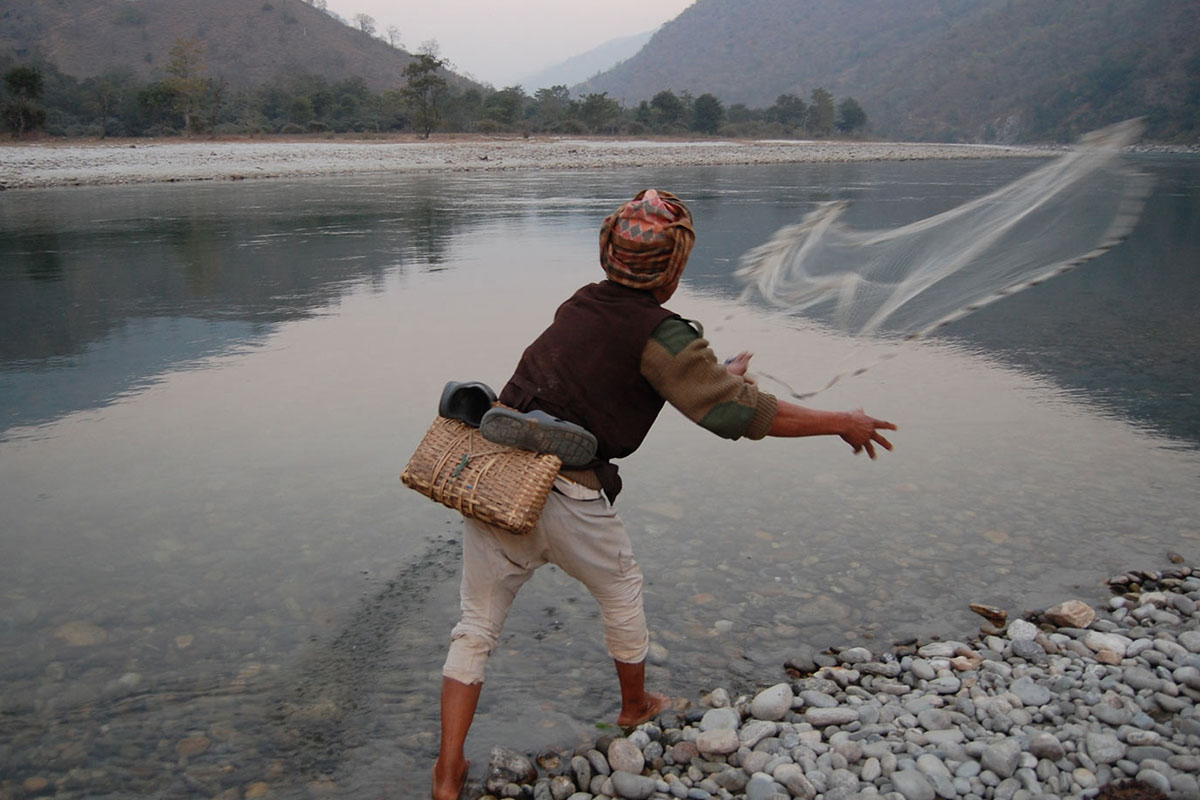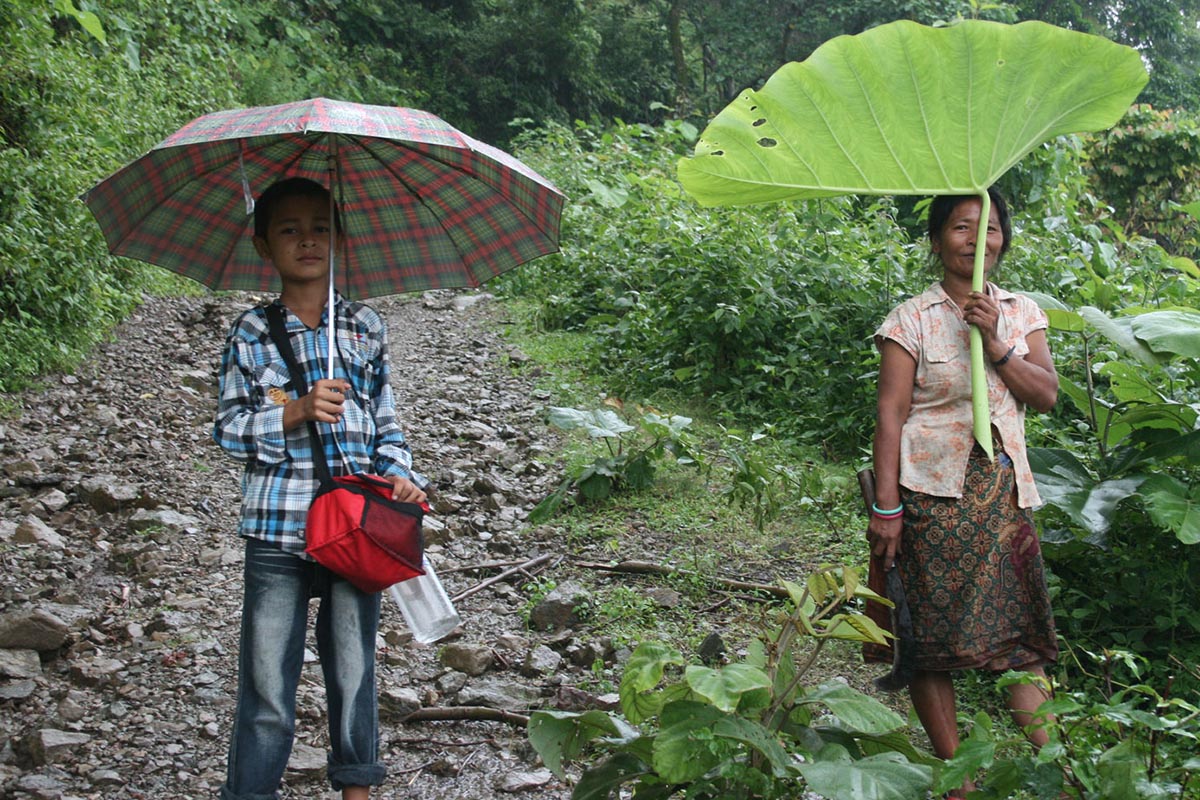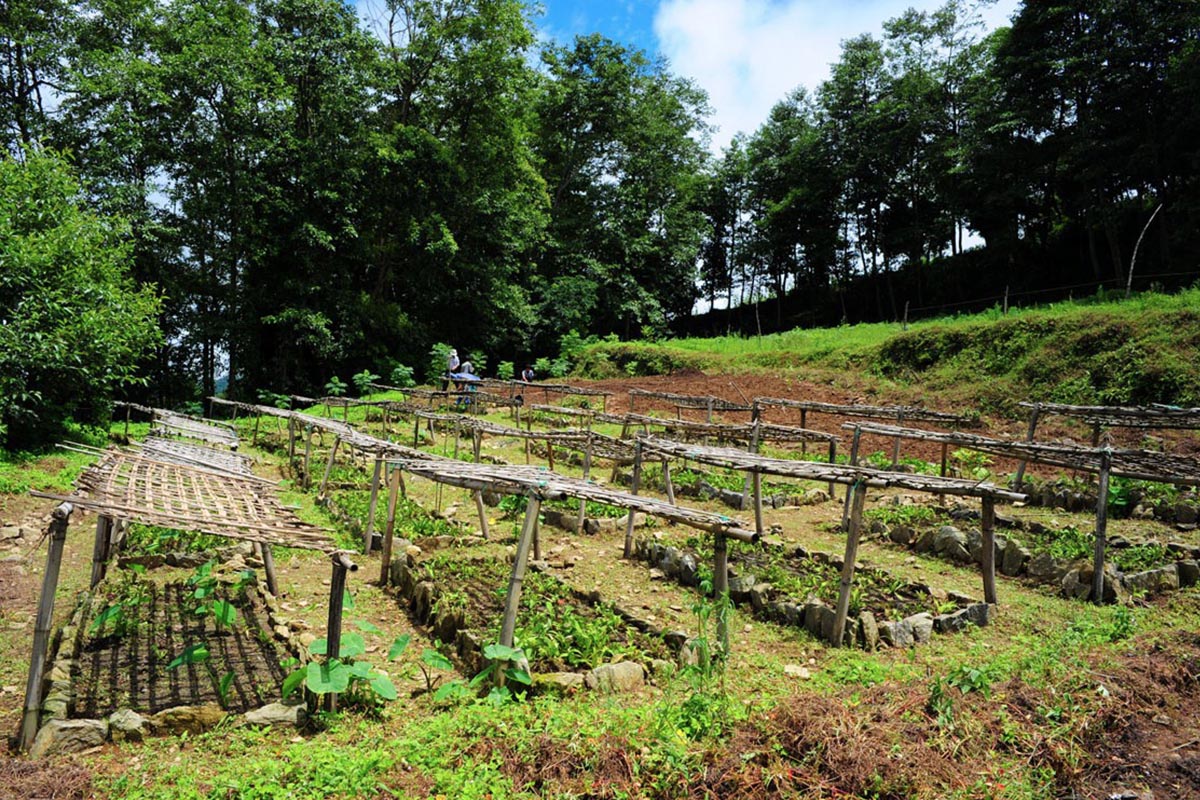Building a ‘Vertical University’ from Koshi Tappu to Mt. Kanchenjunga
Building a ‘Vertical University’ from Koshi Tappu to Mt. Kanchenjunga
Project Status: 10-15 years
GOALS AND OBJECTIVES
In response to forest loss, habitat decrease and drop of biodiversity, students, teachers, farmers, environmentalists and designers came together in 2013 in the eastern region of Nepal to create the ‘Koshi Tappu Kanchenjunga Biodiversity Education Livelihood Tera Studio’ or KTK-BELT project.
The goal of KTK-BELT is to create a continuous forested belt from Koshi Tappu (67 masl), Nepal’s largest aquatic bird reserve, to Mt. Kanchenjunga (8,586 masl), the 3rd tallest peak in the world, to conserve and teach the more than 6,600 plants, 180 mammal species, and 500 bird species found along this 8,000-meter vertical gradient. The BELT would serve as both a ‘living classroom’ or ‘Vertical University’ to teach place-based knowledge, and also a biodiversity corridor, with large tracts of wild, migratory corridors for reproduction and feeding of threatened species in the eastern Himalayas.
At present, the first prototype of the ‘Vertical University’ is being created in Yangshila, located in the Siwalik hills of eastern Nepal. More than 20 ‘learning grounds’ have been assembled with support from the Karuna Foundation, Phul Maya Foundation, Oxfam USA, UC Davis D-Lab, and Cornell University into a 100-acre land trust. This model, if successful, will be applied across the vertical gradient to cover 107 habitat types and reach more than 150,000 people living along this gradient who come from many different caste and ethnic groups, with rich indigenous knowledge about the landscape. These farmers will be the teachers and citizen scientists of the vertical university.

HOW DOES IT CONTRIBUTE TO MOUNTAIN PROTECTION
First, KTK-BELT will contribute to innovative forms of place-based education in the context of mountains. With the view to enhancing local knowledge to better protect the surrounding environment, KTK-BELT will create hundreds of place-based education opportunities by, for example, identifying and labelling species with plant signs, by creating informational signs and pavilions to educate people about ecosystem services. Second, it will contribute to upstream-downstream linkages as communities at higher altitudes will engage in educational exchanges with those living down-stream. In this way, the BELT can enhance disaster resilience and help facilitate cooperative climate change adaptation, an issue that is very current in light of the recent April 25, 2015 earthquake and subsequent natural disaster events. Third, the KTK-BELT project will contribute to research and become a field grounds for those wishing to engage in participatory action research (PAR), where scientific research can be applied to achieve better biodiversity conservation results.
COLLABORATION WITH LOCAL COMMUNITIES AND AUTHORITIES
In creating this project, we were inspired by the breadth, complexity, and inter-generational nature of indigenous knowledge held by local communities, particularly women and elders of Yangshila VDC and Kurule Tenupa VDC in eastern Nepal. The question driving the vertical university project has been, ‘How can a farmer become a teacher?’ Our research and work with the community has shown us that farmers are tremendous assets for conservation, education, culture, and innovative livelihoods, but that both the natural environment and the knowledge these farmers possess are at threat.
Our strategy of creating locally owned ‘Learning Grounds’ empowers local people to help protect vital habitats and biodiversity. For example, the Learning Grounds created in Yangshila in 2014 by Kumar Bishwakarma, has helped identify more than 500 local plant species, helped identify knowledge gaps, and safeguarded more than 100 acres of wetlands, old growth forest, and grassland. In fact, the way we anticipate the vertical university will be built, is through creating approximately 40 such Learning Grounds, all locally owned and operated, from Koshi Tappu to Mt. Kanchenjunga, with KTK-BELT serving as the umbrella.
KTK-BELT is striving to work with international, national, regional and local partners (National Planning Commission of Nepal, Department of National Parks and the Ministry of Forest and Soil Conservation, Kathmandu University Department of Art for example).
GOING FURTHER THAN “BUSINESS AS USUAL”
The Vertical University idea is a highly innovative concept that has not been tried in Nepal. By utilizing the 8,000 meter gradient from sea level to the Himalayas to create place-based education opportunities, linked to farmers and communities, it could radically change the way mountain education happens in Nepal. By creating replicable, locally-owned learning grounds, which are non-profit cooperatives, it uses a public-private model, it will create a federation of conservation bodies, where each one is different and unique, with its own curricula and highlighted species and habitats. It also turns the traditional conception of education so that we can learn most from those who may never have even set a foot in school: the local farmers. It challenges traditional conceptions of ‘literacy’ and ‘knowledge’ to include grassroots inter-generational indigenous knowledge.
Conservation practice tends to focus on a few charismatic species, where KTK-BELT focuses on the vast, extensive biodiversity of ecosystems.


VOLUNTEERING OPPORTUNITIES
Eastern Nepal sees very few tourists. As the nature of tourism and trekking is transforming, KTK-BELT hopes to attract those seeking an educational and cultural experience to walk the belt and even take part in training and workshops in the Vertical University. Permaculture and organic farming have a global following. We have already connected to national and international organic agriculture groups and hope to have volunteers stay in the BELT and serve as both trainers and trainees. The Vertical University will itself be a new kind of trek, spanning 8,000 meters, but focused on biodiversity, where one can learn about the 6,600 vascular plants found along this gradient, while also engaging in recreation and exercise.
CONTACT
Rajeev Goyal
rajeevkumargoyal@gmail.com
belt-project.org

